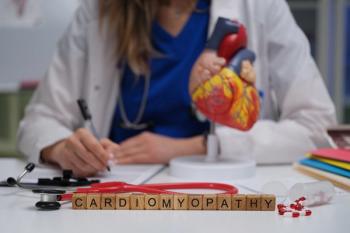Key Takeaways:
- Maternal Antibiotic Exposure During Pregnancy and Childhood Allergic Diseases: A study investigated the association between maternal antibiotic use during pregnancy and the risk of allergic diseases in children up to the age of 3 years. Conditions included preschool asthma, wheezing, food allergy (FA), atopic dermatitis (AD), eczema, allergic rhinoconjunctivitis, and any allergic disease.
- Impact on Respiratory Allergies: The results of the study suggest that maternal antibiotic exposure is linked to an increased risk of respiratory allergies in offspring, including preschool asthma, allergic rhinoconjunctivitis, wheezing, and any allergic disease up to the age of 3 years; however, maternal antibiotic use did not contribute to the risk of developing FA, AD, and eczema.
- Timing, Gender, and Maternal History: The study found that the timing of antibiotic exposure (first trimester or second/third trimester), gender of the infant, and maternal history of allergies did not significantly influence the association between antibiotic exposure during pregnancy and allergic diseases in children; however, previous research has reported varying findings regarding these factors, indicating the complex nature of this relationship.
Childhood allergic diseases have increased, and although they are common chronic inflammatory conditions, these allergies often coexist with other comorbidities (eg, obesity, sleep disorders) that reduce quality of life. Infancy is a critical period in which the microbiome develops, as it affects the development of the immune system.
The microbiome can be influenced by different factors (eg, mode of delivery, breast feeding, exposure to antibiotics). Further, the use of antibiotics during pregnancy has not been extensively evaluated. A recent study published in The Journal of Allergy and Clinical Immunology: Global evaluated the association of maternal exposure to antibiotics during pregnancy with childhood allergic disease up 3 years of age.
A total of 78,678 expectant mothers and their offspring, aged 0 to 3 years, were enrolled in the study. Exclusion criteria consisted of birth by caesarean section, extremely high (≥4000 g) or low (<1000 g) birth weight, and the absence of information regarding antibiotic use. The study’s outcome variables included preschool asthma, wheezing, food allergy (FA), atopic dermatitis (AD), eczema, allergic rhinoconjuctivitis, and any allergic disease, with the prevalence of allergic diseases assessed on the basis of caregiver-reported physician’s diagnosis from the questionnaires at each age.
Prenatal antibiotic exposure was defined as the use of any antimicrobial agent during pregnancy. Information on prenatal antibiotic exposure was collected through an interview questionnaire answered by the mothers at enrollment (eg, “Did you take any antibiotics between the confirmation of pregnancy and gestational age of 12 weeks?” and “Did you take any antibiotics from after gestational age of 12 weeks until now?”) and again during mid-to-late pregnancy, and the review of medical record transcripts developed after delivery. Further, the timing of antibiotic exposure was divided into the first trimester (T1) and second/third trimester (T2/T3).
Results indicate that maternal antibiotic exposure is associated with an increased risk of respiratory allergies in offspring, particularly preschool asthma, allergic rhinoconjunctivitis, wheezing, and any allergic disease up to age 3 years. In addition, the results show that maternal antibiotic use did not contribute to the risk of developing FA, AD, and eczema. Of the total 78,678 mothers included in the study, 22,433 (28.5%) had used antibiotics during pregnancy, with preschool asthma (unexposed: 10.8%; exposed: 12.5%), wheezing (unexposed: 38.2%; exposed: 41.6%), FA (unexposed: 12.8%; exposed: 13.2%), AD (unexposed: 11.3%; exposed: 11.7%), eczema (unexposed: 28.6%; exposed: 28.9%), allergic rhinoconjuctivitis (unexposed: 8.0%; exposed: 9.1%), and any allergic disease up to 3 years (unexposed: 59.6%; exposed: 62.5%) being prevalent. According to the study authors, these findings were not influenced by the timing of antibiotic exposure, gender of the infant, or maternal history of allergies, with the exception of childhood allergic rhinoconjunctivitis risk in the offspring of mothers without a history of allergies.
The authors note that the results from the current study are consistent with prior research. A previous systematic review of 12 studies on antibiotic use during pregnancy presented that childhood asthma and wheezing were associated with prenatal antibiotic use (adjusted odds ratios [aOR] = 1.29 [95% CI = 1.16-1.43]).
The current study indicates that timing of antibiotic exposure (T1 and T2/T3) did not influence the incidence of childhood allergic diseases, unlike previous research that reports a higher risk of preschool asthma and wheezing when antibiotic use occurs during T3. Further, the type of antibiotics that are used during pregnancy may increase the risk of asthma, according to the current authors.
Further, there is inconsistent evidence in regard to the association of antibiotic exposure during pregnancy with childhood AD and eczema, with prior research both supporting and contradicting the current study’s findings. Additionally, there are few findings that indicate an association of antibiotic exposure during pregnancy and child FA. A prior meta analysis notes that there was not an association (aOR = 1.36 [95% CI = 0.94-1.96]); however, these findings were determined to be inconclusive due to the limited number of studies evaluated.
The current study found that both the maternal history of allergies and the gender of the infants did not affect the association of antibiotic exposure during pregnancy with allergic diseases. Prior research contradicts this finding and notes that compared to boys, girls have a lower risk of developing allergies by the age of 3 years (OR for any allergic disease = 0.71 [95% CI = 0.68-0.73]).
Limitations of the study include insufficient data to assess the influence of the type, dose, and administration of the antibiotics used; the assessment of allergies being dependent on caregiver reports, resulting in potential recall bias; and the inability to definitively diagnose preschool asthma at the age of 3 years. Further, the authors note that 18,270 (81.4%) of the 22,433 women who used antibiotics during pregnancy were confirmed after a review of medical record transcripts, whereas the remaining 4163 (18.6%) were confirmed on the basis of the mothers’ reports through completing questionnaires, therefore, there may have been an additional risk of recall bias. The study authors suggest that future research takes the type, dose, and administration of antibiotics into consideration.
Reference
Okoshi, K, Sakurai, K, Yamamoto, M. Maternal antibiotic exposure and childhood allergies: The Japan Environment and Children’s Study. JACI: Global. 2023;2(4). doi:10.1016/j.jacig.2023.100137








































































































































































































